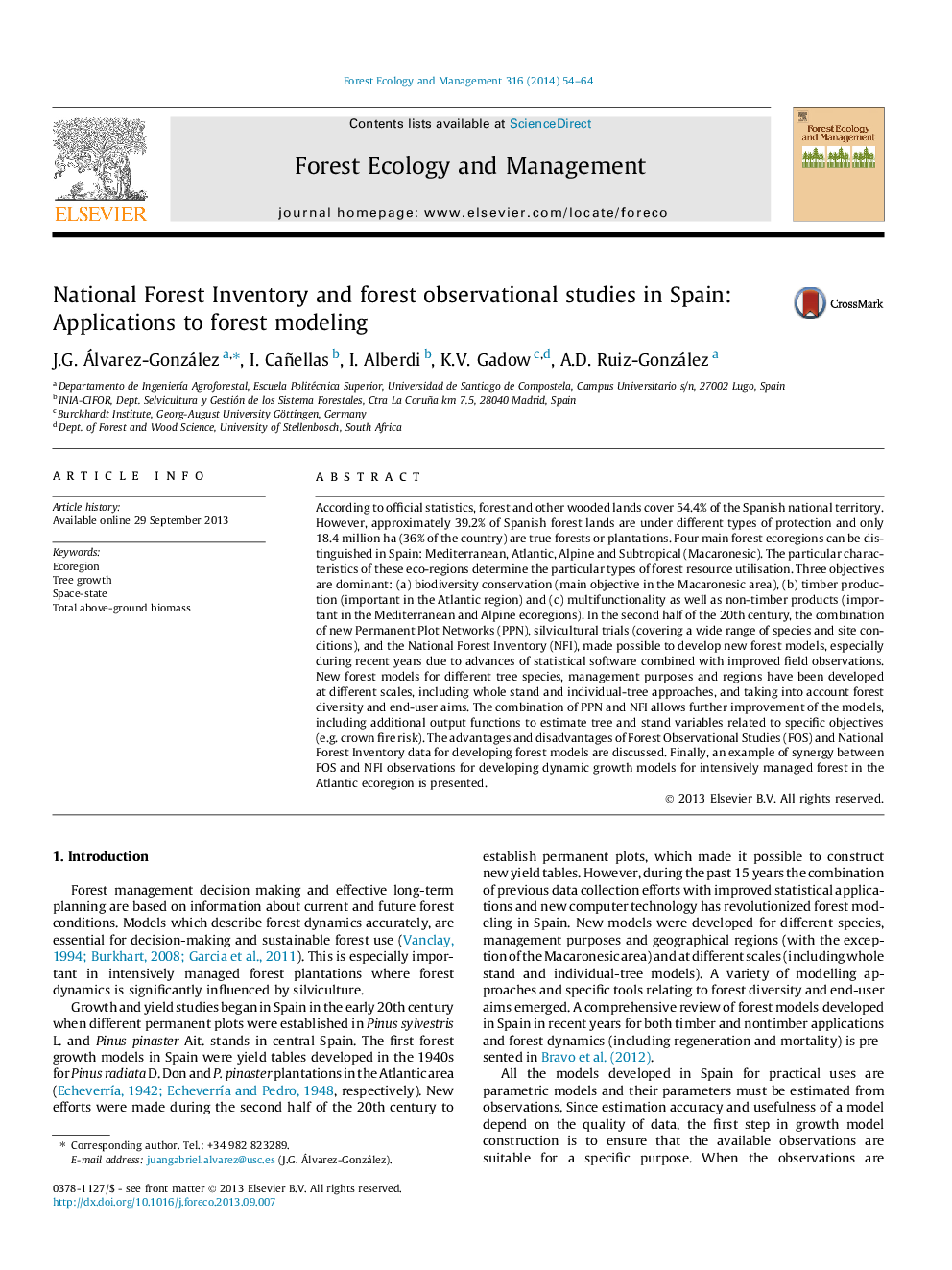| کد مقاله | کد نشریه | سال انتشار | مقاله انگلیسی | نسخه تمام متن |
|---|---|---|---|---|
| 86918 | 159221 | 2014 | 11 صفحه PDF | دانلود رایگان |
• An example of synergy between forest observational studies and national inventories is presented.
• Site index curves were fitted using the generalised algebraic dynamic approach.
• Stand growth equations were fitted simultaneously to takes into account the cross-equation correlations.
• Different growth patterns were observed between ecoregions and were included in the models.
According to official statistics, forest and other wooded lands cover 54.4% of the Spanish national territory. However, approximately 39.2% of Spanish forest lands are under different types of protection and only 18.4 million ha (36% of the country) are true forests or plantations. Four main forest ecoregions can be distinguished in Spain: Mediterranean, Atlantic, Alpine and Subtropical (Macaronesic). The particular characteristics of these eco-regions determine the particular types of forest resource utilisation. Three objectives are dominant: (a) biodiversity conservation (main objective in the Macaronesic area), (b) timber production (important in the Atlantic region) and (c) multifunctionality as well as non-timber products (important in the Mediterranean and Alpine ecoregions). In the second half of the 20th century, the combination of new Permanent Plot Networks (PPN), silvicultural trials (covering a wide range of species and site conditions), and the National Forest Inventory (NFI), made possible to develop new forest models, especially during recent years due to advances of statistical software combined with improved field observations. New forest models for different tree species, management purposes and regions have been developed at different scales, including whole stand and individual-tree approaches, and taking into account forest diversity and end-user aims. The combination of PPN and NFI allows further improvement of the models, including additional output functions to estimate tree and stand variables related to specific objectives (e.g. crown fire risk). The advantages and disadvantages of Forest Observational Studies (FOS) and National Forest Inventory data for developing forest models are discussed. Finally, an example of synergy between FOS and NFI observations for developing dynamic growth models for intensively managed forest in the Atlantic ecoregion is presented.
Journal: Forest Ecology and Management - Volume 316, 15 March 2014, Pages 54–64
